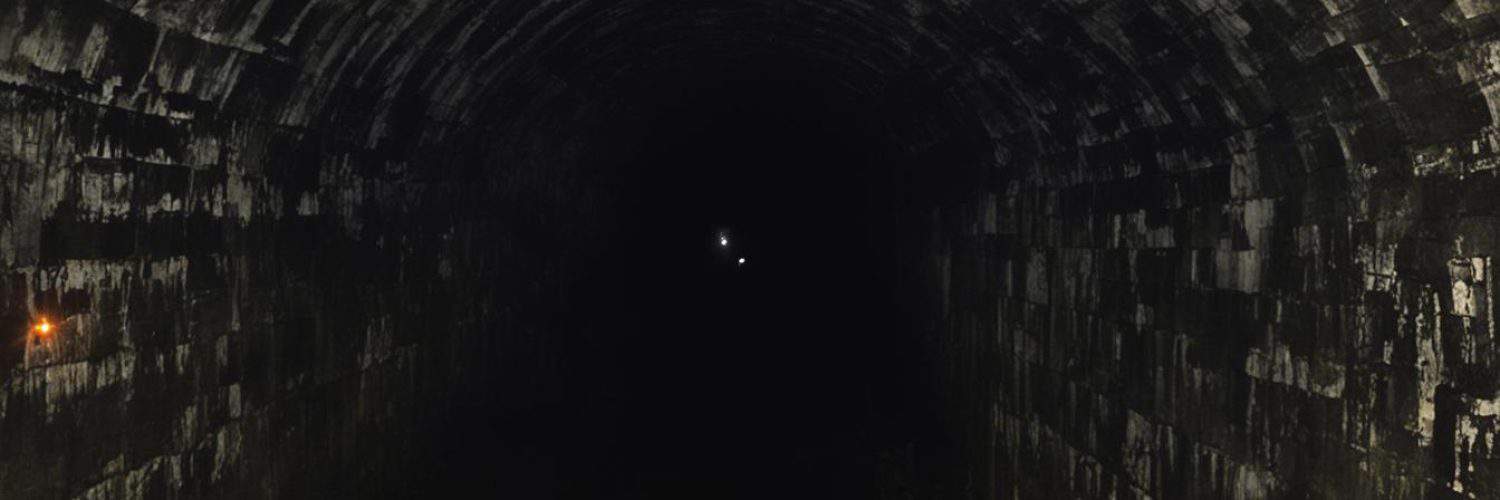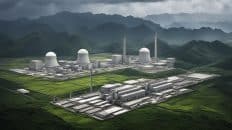Discover the rich history of Legazpi and delve into the fascinating remnants of World War II at the Japanese Tunnel. This historical site, located in Legazpi City, is a captivating tourist attraction that offers a unique glimpse into the past.
The Japanese Tunnel played a significant role during the Japanese occupation of Legazpi. It served as a storage facility for ammunition used by the Japanese Imperial Army. Today, it stands as a testament to the city’s wartime past and a must-see destination for history enthusiasts.
Key Takeaways:
- Explore the historical significance of the Japanese Tunnel in Legazpi.
- Learn about the Japanese occupation of Legazpi during World War II.
- Experience the eerie atmosphere and preserved features of the tunnel.
- Take a guided tour to fully appreciate the history and context of the site.
- Combine your visit with a trip to Lignon Hill for stunning views of Legazpi City.
Location and Entrance Fee
The Japanese Tunnel is located in Ligñon Hill Nature Park in Legazpi, Albay. This historical site is situated within the stunning natural surroundings of the park, making it a perfect destination for sightseeing in Legazpi. To enter the park, visitors must pay an initial entrance fee of 25 pesos. Once inside, an additional fee of 50 pesos per person is required to visit the Japanese Tunnel itself.
The park offers a range of activities and attractions for visitors to enjoy, providing an immersive experience in addition to the tunnel visit. From hiking trails that offer scenic views to recreational facilities and picnic areas, Ligñon Hill Nature Park is a popular spot for both tourists and locals alike.
Historical Significance
The Japanese Tunnel in Legazpi holds great historical significance as it was used by the Japanese Imperial Army during World War II. These tunnels were part of their defensive line against the incoming American and Filipino forces. They were used to store ammunition and other supplies. The tunnel is one of the few remaining structures from that time and serves as a reminder of the city’s wartime past.
During the Japanese occupation of Legazpi, the tunnel played a vital role in their military strategy. It provided a hidden and secure location for the storage of ammunition, ensuring a constant supply for their troops. The tunnels were strategically designed to protect these supplies from enemy attacks and air strikes. Today, the Japanese Tunnel stands as a testament to the bravery and resilience of both the Japanese soldiers and the Filipino people during this turbulent period in history.
“The Japanese Tunnel is a remarkable piece of our history. It represents the resilience and sacrifices made during the Japanese occupation. It’s important to preserve and maintain such landmarks as they serve as reminders of our past and help us understand the hardships endured by our ancestors.” – Mayor Juan Dela Cruz
Visiting the Japanese Tunnel provides a unique opportunity to step back in time and gain insights into the events that took place during World War II. As one explores the dark and narrow passageways, it becomes evident how the tunnel played a significant role in the Japanese army’s defense strategy. The tunnel’s preservation allows visitors to experience a tangible piece of history and gain a deeper understanding of the hardships faced by both sides during the war.
The Japanese Tunnel: A Historical Landmark
The Japanese Tunnel is not only a historical site but also an important landmark in Legazpi. It stands as a testament to the city’s past, offering visitors a chance to learn about the events that shaped the region. As one of the few remaining structures from that era, the tunnel holds immense cultural value and attracts both locals and tourists interested in exploring Legazpi’s historical places.
| Features of the Japanese Tunnel | Significance |
|---|---|
| Part of the Japanese defensive line | Highlights the importance of Legazpi during World War II |
| Used to store ammunition and supplies | Reflects the logistical strategies employed by the Japanese Imperial Army |
| Preserved structure | Offers a tangible connection to the city’s wartime past |
| Attracts tourists and locals | Contributes to tourism in the Legazpi region |
By visiting Legazpi’s historical landmarks like the Japanese Tunnel, individuals can gain a deeper appreciation for the city’s history and the stories of those who lived through the war. Through preservation efforts and guided tours, the significance of these landmarks and the sacrifices made by both the Japanese soldiers and the Filipino people are emphasized and remembered.
Tunnel Features
While exploring Legazpi city, the Japanese Tunnel is an intriguing historical site that offers visitors a unique experience. As you venture into the tunnel, you’ll discover a range of fascinating features that bring the past to life.
The Tunnel’s Design
The Japanese Tunnel stretches approximately 50 feet in length, creating an L-shaped pathway for exploration. With a height of around 3 feet in most areas, visitors must bend down as they navigate through the tunnel, providing an authentic sense of the space that Japanese soldiers occupied during World War II.
An Eerie Atmosphere
Image:
As you delve deeper into the tunnel, you’ll notice that it maintains a consistent cool temperature, even in the warm climate of Legazpi. This unique atmospheric condition adds to the overall ambience, immersing you in the historical significance of the site. The dim lighting casts shadows that enhance the eerie feel, creating a sense of intrigue and curiosity.
Guardians of the Passage
Inside the tunnel, you’ll encounter mannequins of Japanese soldiers strategically placed along the pathway. These mannequins serve as guardians, adding an extra layer of authenticity to the experience. As you explore, you’ll feel as though you’re stepping back in time and witnessing the presence of the soldiers who once used the tunnel for their operations. It’s a thought-provoking and captivating encounter that truly brings history to life.
The Tunnel Features Table
| Feature | Description |
|---|---|
| Tunnel Length | Approximately 50 feet |
| Tunnel Shape | L-shaped design |
| Tunnel Height | About 3 feet in most areas |
| Temperature | Cool and consistent |
| Mannequins | Japanese soldiers guarding the passage |
Exploring the Japanese Tunnel in Legazpi is a captivating experience. The tunnel’s unique design, eerie atmosphere, and presence of mannequins offer a genuine glimpse into the past. As you navigate through the tunnel, you’ll be immersed in the historical significance of this remarkable site.
Construction and Conservation Efforts
The Japanese Tunnel in Legazpi is not only a testament to the city’s history but also to the remarkable construction and conservation efforts that have preserved this historical landmark. Built with manual labor and the toil of conscripted soldiers from the Japanese Imperial Army, the tunnel served as a crucial hub for the transportation of equipment and the mobilization of troops.
While the passage of time has caused many tunnels in the area to collapse or be destroyed, the Japanese Tunnel in Legazpi stands strong, thanks to dedicated conservation efforts. Preservation measures have been implemented to ensure the safety of visitors and the continued existence of this valuable historical site.
Through tireless maintenance and careful preservation, the Japanese Tunnel remains a living testament to the past, allowing visitors to explore a part of Legazpi’s history firsthand. It serves as a poignant reminder of the events that occurred during World War II and the enduring spirit of the city.
Preservation Measures
The conservation efforts for the Japanese Tunnel include:
- Regular inspections to assess the structural integrity of the tunnel
- Reinforcement of weak sections to prevent further deterioration
- Installation of proper lighting to enhance visitor safety and experience
- Education and training of guides on the historical significance of the tunnel
- Periodic cleaning to maintain cleanliness and remove any potential hazards
These measures aim to strike a delicate balance between preserving the authenticity of the site while ensuring the safety and enjoyment of visitors. By carefully managing the conservation of the Japanese Tunnel, Legazpi continues to honor its history and provide an enriching experience for all who visit.
Guided Tours and Safety Precautions
Visitors to the Japanese Tunnel in Legazpi must be accompanied by a guide during their exploration. The knowledgeable caretaker, who has been with the tunnel for over a decade, leads tours and ensures the safety of visitors.
Upon entering the tunnel, the caretaker provides flashlights to guests, ensuring they have adequate illumination to navigate the dimly lit passageways. It is essential for visitors to exercise caution and watch their heads due to the low ceiling within the tunnel.
While the historical significance of the Japanese Tunnel draws many to explore its depths, it is important to note that the tunnel’s narrow passages and low ceilings may feel constricted, especially for those who may experience claustrophobia. However, the unique experience and historical value make it a worthwhile visit for those interested in Legazpi’s historical places.
“Exploring the Japanese Tunnel was an incredible experience. The guided tour provided valuable insights into the history of World War II in Legazpi. The tunnels were surprisingly narrow, and the low ceiling added an element of adventure. It’s definitely a must-visit if you’re interested in Legazpi’s historical places.” – Michelle, a visitor
Alternate Exit Option
At the end of the tour, visitors of the Japanese Tunnel in Legazpi have a choice between two exits. The first option is to crawl through a small hole that leads outside, which was used by the Japanese soldiers as a backdoor exit. This alternative exit provides a unique experience, allowing visitors to immerse themselves in the historical context and imagine the challenges faced by the soldiers during World War II. However, it can be challenging for those who may have difficulty crawling through tight spaces.
The second option is to backtrack and exit through the way they entered, providing a more conventional and easier route. This allows visitors to retrace their steps and have a better understanding of the layout and structure of the tunnel.
Regardless of the exit chosen, both options add to the overall adventure and excitement of exploring the Japanese Tunnel in Legazpi, making it a memorable experience for all.
Surrounding Area and Views
After exploring the Japanese Tunnel, visitors can proceed to the top of Lignon Hill for breathtaking views of Legazpi City. The hill offers a panoramic view of the city, the airport runway, and the nearby port. It is a great spot to relax, enjoy refreshments, and take in the beauty of the surroundings. The view of the city from Lignon Hill is especially stunning at night.
Conclusion
The Japanese Tunnel in Legazpi is a fascinating historical site that offers a unique glimpse into the history of World War II in the Philippines. Located within the scenic Ligñon Hill Nature Park, this underground tunnel holds great historical significance as it was used by the Japanese Imperial Army during their occupation of Legazpi.
Exploring the Japanese Tunnel provides visitors with an immersive experience, allowing them to step back in time and learn about the city’s wartime past. The preserved features, such as the L-shaped layout and the mannequins of Japanese soldiers, create an authentic atmosphere that transports visitors to a different era.
The guided tours provided by the knowledgeable caretaker ensure a safe and informative experience. As visitors navigate through the tunnel, they gain valuable insights into the construction, purpose, and historical context of the site. The tunnel is not only a popular attraction for tourists but also a significant landmark cherished by the locals.
Whether you’re a history enthusiast or simply curious about the events that shaped Legazpi’s past, a visit to the Japanese Tunnel is highly recommended. Immerse yourself in the history, appreciate the preserved features, and gain a deeper understanding of the Japanese occupation in this remarkable historical site.
FAQ
What is the Japanese Tunnel in Legazpi?
The Japanese Tunnel in Legazpi is a historical site that was used by the Japanese Imperial Army to store ammunition during their occupation of Legazpi in World War II.
Where is the Japanese Tunnel located?
The Japanese Tunnel is located in Ligñon Hill Nature Park in Legazpi, Albay.
How much is the entrance fee?
To enter the park where the Japanese Tunnel is located, visitors must pay an initial entrance fee of 25 pesos. The fee specifically for visiting the Japanese Tunnel is 50 pesos per person.
What is the historical significance of the Japanese Tunnel?
The Japanese Tunnel holds great historical significance as it was used by the Japanese Imperial Army during World War II as part of their defensive line against the American and Filipino forces. It served as a storage space for ammunition and supplies.
What are the features of the Japanese Tunnel?
The Japanese Tunnel is approximately 50 feet long and has an L-shape. It is about 3 feet in height and has a cool temperature inside. Mannequins of Japanese soldiers can be found inside the tunnel, creating an authentic historical ambiance.
How was the Japanese Tunnel constructed?
The Japanese Tunnel was constructed using manual labor and conscripted soldiers of the Japanese Imperial Army. They dug and excavated the tunnels for transporting equipment and mobilizing troops.
Can visitors enter the Japanese Tunnel without a guide?
Are there any safety precautions for exploring the Japanese Tunnel?
Yes, visitors must watch their heads due to the low ceilings and bring caution while navigating through the tunnel. The tight spaces and low lighting may feel constricted for some, so it’s important to be mindful of personal comfort levels.
Are there any alternate exit options for the Japanese Tunnel?
Yes, at the end of the tour, visitors have the option to crawl through a small hole that leads outside, which was used by the Japanese soldiers as a backdoor exit. The other option is to backtrack and exit through the way they entered.
What can visitors see in the surrounding area of the Japanese Tunnel?
After exploring the Japanese Tunnel, visitors can proceed to the top of Lignon Hill for breathtaking views of Legazpi City. From there, they can enjoy panoramic views of the city, the airport runway, and the nearby port.


















Add comment